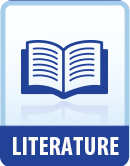|
This section contains 252 words (approx. 1 page at 400 words per page) |

|
A symbol is a physical object, action, or gesture that also represents an abstract concept, without losing its original identity. Symbols appear in literature in one of two ways. They can be local symbols, meaning that their symbolism is only relevant within a specific literary work. They can also be universal symbols, meaning that their symbolism is based on traditional associations that are widely recognized, regardless of context. In Hébert's poem, she relies on universal symbols, such as birth, death, and the seasons. At the beginning of the poem, the day is born, and Nature starts out as a "bloody beast." While blood is used as the symbol for many different concepts, in this case, Hébert is depicting the painful birth of Nature at the beginning of the day. This contrasts with night, which is traditionally associated with death: "Soon she'll place her hands...
|
This section contains 252 words (approx. 1 page at 400 words per page) |

|




